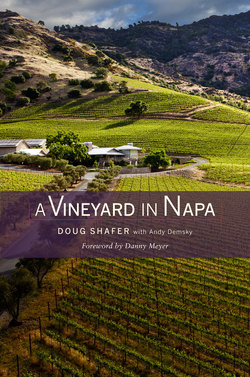Читать книгу A Vineyard in Napa - Doug Shafer - Страница 18
На сайте Литреса книга снята с продажи.
ОглавлениеNINE
Alfonso
If he was going to get serious about taking over his vineyards, one of the first things Dad realized he needed was manpower. His thought was to hire a foreman to live on-site to help with the increasing workload. When he asked around for recommendations, John Piña pointed him toward a young man on his own crew named Alfonso Zamora-Ortiz.
Alfonso had little or no vineyard experience, but he had worked in a nursery and possessed valuable insights regarding plant life—how to size up the health of a vine, when to prune, how much to irrigate, and so forth. None of his guidance came from reference works or a formal education; all of it came through observation, gut feeling, and experience. If he had Big John’s respect, Dad thought, Alfonso was certainly worth trying out.
Alfonso had fairly recently come to the Valley from his home in the Mexican state of Jalisco and didn’t speak much English. Dad wasn’t terribly fluent in Spanish, although he’d been studying it in night classes at Napa Valley College. Yet they managed to communicate through gestures and half-sentences and a sense of humor.
Working together, Dad and Alfonso picked up on the basics of things like running and maintaining a tractor, discing between vine rows, and using sprayers and dusters. They took on the tasks of laying out and terracing the new vineyard blocks, repairing fences, and digging post-holes for the new trellis systems.
Early on they tried to tackle the weed problem with the use of a French plow. Dad drove the tractor pulling the plow, while Alfonso walked behind and steered the plow’s blade around the base of the vines to clear the unwanted weeds and wild grasses. It was not a perfect system, and they had their share of gouged vine trunks.
Worse was when Dad drove the tractor pulling the discer between the rows. The spacing was unforgiving, allowing only a few inches between each side of the discer and the head-pruned vines, whose fifty-year-old trunks were as thick as posts. More than once in less-watchful moments Dad took out an entire vine. Among growers this is called “tractor blight.”
Meanwhile, it came time to make a second run at grafting grapevines onto the budwood now sprouting optimistically again on the vineyard block, which was stuck with the name John’s Folly. The fence had successfully been mended, keeping out all the hungry deer. When it came time to “bud over,” as it’s called, rather than go to a nursery and purchase Cabernet budwood—as is standard practice today—unbeknownst to Dad, Big John did the far more practical thing, and something that had happened in the Valley for decades—he got some for free. Besides helping to manage our vines, Piña also worked for a lot of other people, including Milt Eisele, taking care of his vineyards in Calistoga. This had become a well-known site, thanks to the fact that Phelps produced a rock-star wine called Joseph Phelps Eisele Vineyard Cabernet Sauvignon. It was one of the early Cabs, like Heitz’s Martha’s Vineyard, which were head-turners and showed the rest of us what Napa Valley was capable of producing.
When it was time to make a second attempt to bud John’s Folly to Cabernet, John Piña simply cut the requisite number of canes, or vine branches, from Milt’s vineyards (without mentioning it to Milt) and brought them over to our property.1
Dad did not discover this act of cane-sharing until some weeks later when he bumped into Milt at a cocktail party and Milt let Dad know he was not terribly pleased.
This time, without any interference from leaping stags, the grafts took beautifully to the budwood, and we were at long last in the hillside vineyard business.
1. Years later Bart Araujo purchased Eisele Vineyard, and the vines were unfortunately struck by our old microscopic nemesis, phylloxera. Needing to replant, Araujo contacted me to see if they could have some of our Eisele budwood. Of course I said yes, and Araujo Estate Wines recovered from phylloxera with new budwood from their original vine cuttings. Four or five years later, we needed to replant a small block of our hillside vineyard, and I called Bart and asked if we could have some canes, and he graciously agreed. Back and forth it goes.
